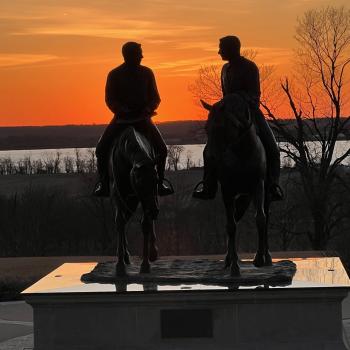
(Wikimedia Commons public domain photograph)
We were rather depressed the other day to see the state of the forests in Glacier National Park, just south of the Canadian border.
Most of the trees on one side of Lake McDonald, for example, were dead. A huge forest fire engulfed them in August of 2018.
Moreover, something called blister rust, a non-native fungus, has heavily impacted the whitebark pine forests there. Within the park and in the surrounding areas, thirty percent of the whitebark pine trees have died and more than seventy percent of the remaining trees are currently infected. From 1930 to 1970, there were efforts to stop the spread of blister rust, but they failed, and it seems that the fungus will continue to kill the region’s whitebark pines into the indefinite future. This will have a negative impact on large sectors of the food chain, not merely on the aesthetic sensibilities of tourists. Red squirrels, a local species of nutcracker, and the area’s black bears all favor whitebark pine nuts and, more and more, those will be in short supply.
Since roughly 2005, too, massive infestations of mountain pine beetles have killed millions of acres of forest in the western portions of North America, from New Mexico to British Columbia. We’ve seen (and I’ve commented upon) their grievous impact in southern Utah. It has been suggested that the spread of these pine beetles is one consequence of global warming: Warmer winters allow the beetles to expand their range northward.
We were happy to see no major damage to the forests in Banff National Park or to the southern portion of Jasper National Park. At just about the place where the Athabasca Glacier sits to the west of the main road, though, the trees began to turn a rust color, brownish red, and we knew that things were bad. (I posted a photo the other day of tiny Spirit Island, in Lake Maligne. The trees on it are now mostly dead.) And even most of those that remain green right now are, I’m informed, already infected. Moreover, from what we were told, the pine beetle is moving downward, from north to south, so southern Jasper and Banff are clearly in its sights.
The authorities are evidently making no effort to stop the beetle’s spread. Their reasoning is clear, and I can’t really fault it: Such infestations and fires are part of the normal life cycle of a forest, so humans shouldn’t interfere. In fact, the forests in Jasper, one guide told us, are past their prime and need a thinning out. They’re now so dense that animals and other plants have a difficult time in their shade, and even the trees themselves have a problem reproducing. The current population of trees — around Maligne Lake, mostly lodgepole pines because a major fire wiped out the earlier dominant community of Douglas firs — is aging.
All well and good. I get it. But individual human lives are so very short that these climate and ecological cycles mean that we who are alive today will never see Glacier and Jasper reforested, looking the way we once knew it. And, of course, compared to climate cycles — let alone to geological epochs — our lives are like those of fireflies. Sometimes, mortality hurts.
Posted from Canmore, Alberta, Canada










